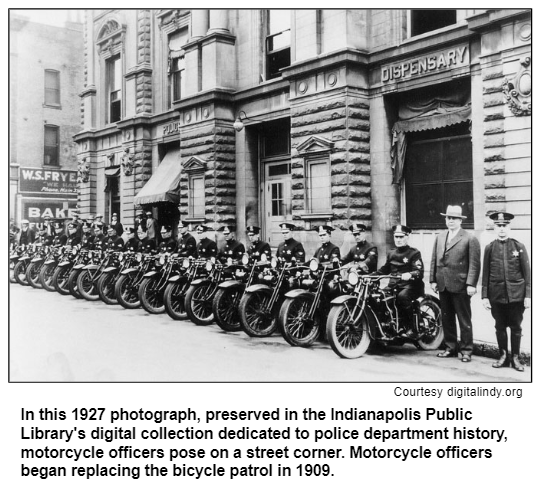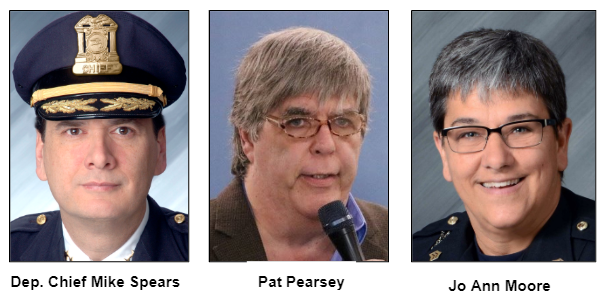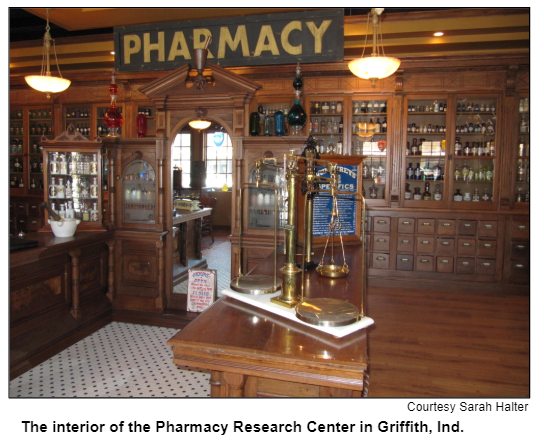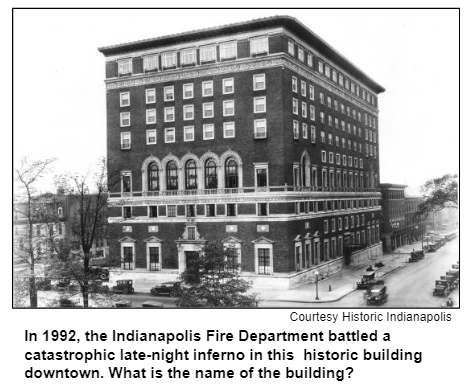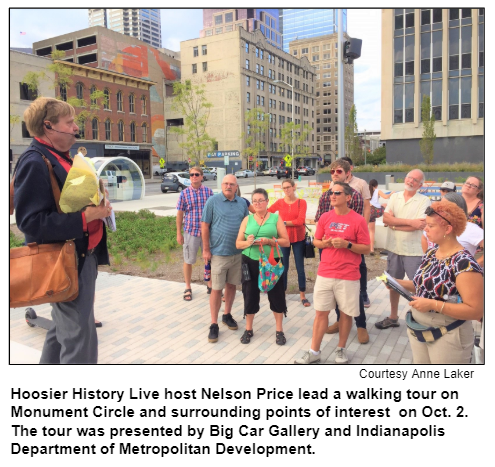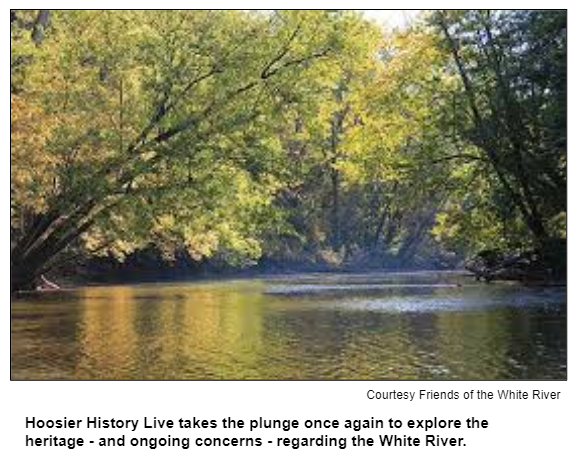
Saturdays, noon to 1 p.m. ET on WICR 88.7 FM.
Or stream audio live from anywhere on WICR Online!
You can listen to recent shows by clicking the podcast links below, or check out our extensive archive of past shows available as podcasts
October 12, 2019
Police department history in Indy
The first African-American police officer to be named a detective in Indianapolis was born into slavery in Virginia. After Benjamin Thornton became a detective in 1886 in what today is called the Indianapolis Metropolitan Police Department (IMPD), he earned acclaim across the country for his skills in tracking criminals.
In 1918, fourteen policewomen were appointed for the first time to work outside headquarters, on the streets of the Hoosier capital. (In the 1890s, the department had established a position of "police matron" whose duties focused on counseling teenage girls.) The policewomen in 1918 were needed because of a scarcity of male officers during World War I.
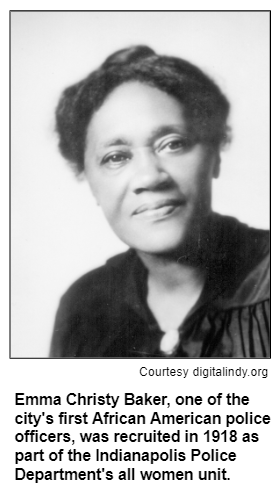 The trail-blazing women included Clara Burnside, the first captain in what was then the Indianapolis Police Department, and Emma Christy Baker, an African-American who confronted various challenges in her new position. For example, Baker was surrounded and taunted by a group of downtown pedestrians when she attempted to interrogate a suspect. Initially, none of the policewomen were allowed to carry weapons or billy clubs.
The trail-blazing women included Clara Burnside, the first captain in what was then the Indianapolis Police Department, and Emma Christy Baker, an African-American who confronted various challenges in her new position. For example, Baker was surrounded and taunted by a group of downtown pedestrians when she attempted to interrogate a suspect. Initially, none of the policewomen were allowed to carry weapons or billy clubs.
To explore these and other aspects of the history of the police department, Nelson will be joined by:
- Deputy Chief Mike Spears, a veteran of more than 36 years on IMPD. He served as the city's police chief for five years beginning in 2005.
- Patrick Pearsey, the archivist for IMPD. A civilian member of the department since 1980, Patrick is the author of several books about various aspects of police history, including a biography of Benjamin Thornton.
- And Jo Ann Moore, a retired IMPD office and archivist. For most of her 32 years on the police force, she was a street supervisor. Her husband also is a retired police officer; their son, IMPD officer David Moore, was killed in the line of duty in 2011.
Our guests have been working with the Indianapolis Public Library to put together a digital collection about the police department's history. The collection, which recently launched on the library's Digital Indy website, includes more than 1,500 mugshots, historic personnel records and crime scene information, but it is not all-inclusive.
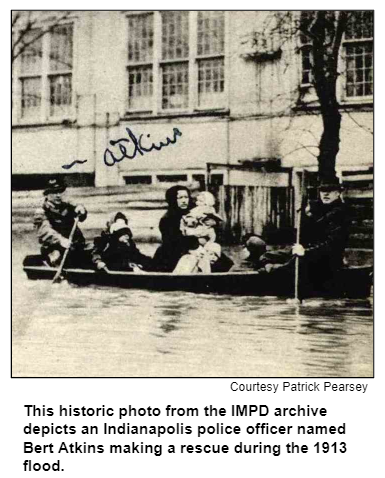
In 1876, ten years before Benjamin Thornton was promoted and served as the first African-American detective on the police force, he was among a group of six men who became the first black police officers in the city.
Thornton, who was born in 1849, had fled a plantation in Virginia where he had been enslaved. After the Civil War, Thornton taught himself to read and write. He lived in several cities before settling in Indianapolis, where his early jobs included carpentry, according to research by our guest Patrick Pearsey.
During our show, Patrick also will share insights about another aspect of law enforcement history that he has researched: The response by the police to the Flood of 1913, the worst in state history. The Flood of 1913 was the focus of a Hoosier History Live show in 2013.
Other significant episodes that we will explore include two strikes: a streetcar strike in 1892 in which several police officers were assaulted, and a massive protest by officers in 1977 when the city administration proposed ending the practice of allowing squad cars to be taken home. Hundreds of off-duty officers parked their cars - with their sirens blaring and red lights on - in front of police headquarters, making national news.
Because we have devoted previous Hoosier History Live shows to many of the most notorious crimes investigated by the Indianapolis police, we will take a different approach during this program and focus on some of the most unusual cases.
They will include a sensational episode in 1954 that has become known as the Battle of Elder Avenue. A man with a history of mental illness barricaded himself into a near-Westside house and shot his wife and nine police officers. More than 200 other police officers arrived on the scene and were held at bay for nearly three hours while thousands of spectators watched. All of the shooting victims survived, including our guest Patrick Pearsey's grandfather, who was the first police officer to be shot.
On a much lighter note - and with a nod to the Halloween season – we also will explore a 1962 case in which the police were summoned several times to investigate reports of a poltergeist.
Roadtrip: Private pharmacy museum in Griffith
This week's Roadtrip takes us to the Pharmacy Research Center, a museum in the town of Griffith, located in northwest Indiana.
Housed in an old bank building, the museum contains a private collection of beautifully displayed artifacts and documents showcasing the history of pharmacy, including patent medicines, equipment, advertisements, drug store displays, apothecary, etc.
Visits are by appointment only; the museum can be reached at 319-924-5807.
History Mystery
In 1992, the Indianapolis Fire Department battled a catastrophic late-night inferno in a historic building downtown. Two firefighters were killed while battling the blaze, becoming the first city firefighters to die in the line of duty in more than 20 years.
The nine-story building is well-known in the Hoosier capital and was constructed during the early 1920s. Like many structures built during that era, it had no sprinkler system.
In addition to the two firefighters who were killed, a civilian who was in the historic building also perished. Several other firefighters suffered severe injuries, as did other civilians.
The building, which is on the National Register of Historic Places, was saved from destruction and eventually repaired. More than 10 years ago, its rooms were converted into luxury condominiums.
Question: What historic building in downtown Indy was the setting for a tragic fire in 1992?
The call-in number is (317) 788-3314. Please do not call into the show until you hear Nelson pose the question on the air, and please do not try to win the prize if you have won any other prize on WICR during the last two months. You must be willing to give your name and address to our engineer and be willing to be placed on the air.The prizes this week are two tickets to the Indiana State Museum, courtesy of the Indiana State Museum, and two tickets to the Eiteljorg Museum, courtesy of the Eiteljorg Museum. Enjoy some time in White River State Park, and you can park in the underground lot for both museums if you want to do it all in one day!
Walking Tour of the Circle hits the mark!
Nelson Price, host and historian
Molly Head, producer/general manager, (317) 927-9101
Michael Armbruster, associate producer
Cheryl Lamb, administrative manager
Richard Sullivan, senior tech consultant
Pam Fraizer, graphic designer
Garry Chilluffo, special events consultant
Please tell our sponsors that you appreciate their support!

 For organizational sponsorship, which includes logos, links, and voiced credits in the show and in podcasts, contact producer Molly Head at (317) 927-9101 or email her at molly@hoosierhistorylive.org. Our podcast listens are increasing at a rate of 17% a month!
For organizational sponsorship, which includes logos, links, and voiced credits in the show and in podcasts, contact producer Molly Head at (317) 927-9101 or email her at molly@hoosierhistorylive.org. Our podcast listens are increasing at a rate of 17% a month!
Acknowledgments to Visit Indy, Fraizer Designs,WICR-FM, Henri Pensis, Aaron Duvall, Chloe Tyson, and many other individuals and organizations.
Thank you!
We'd like to thank the following recent, new and renewal contributors whose donations help make this show possible!
- Bruce and Julie Buchanan
- David Willkie
- Coby Palmer in memory of Gary BraVard
- Tim Harmon
October 19, 2019 - coming up
Another plunge into the White River
In many ways, our White River history show in July offered depth and context about the heritage of the waterway. In other ways, though, we barely skimmed the surface, particularly because the White River has been in the news so much during the last three months.
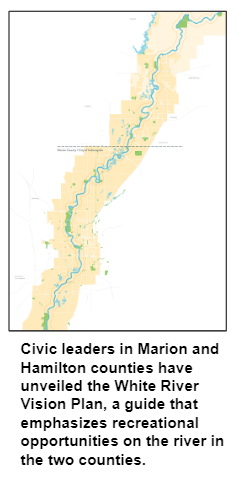
So Hoosier History Live will once again plunge into all aspects of the river, from its use by flatboat crews who moved trade goods on the waterway during the early 1800s to the return of significantly larger numbers of some fish species, including bass, and other wildlife, thanks to progress achieved since the early 1980s in cleaning up the river.
Not only will Kevin Hardie, executive director of the Friends of the White River, return as a studio guest, we will keep the phone lines open throughout the entire show for listeners who want to comment or ask questions about any aspect of the river's heritage. The phone number for the WICR-FM (88.7) studio is (317) 788-3314.
The Star series describes a 1982 survey that found only 35 species of fish in the West Fork of the White River; in contrast, 57 species were documented in 2011.
Referring to fish life during the mid-19th century, Kevin Hardie says:
"‘Trout' were supposedly speared from what were then crystal clear waters that did not carry the amounts of today's agricultural and developmental run-off that hold so much sediment. Actually, these fish probably were sauger, which are similar in shape to trout and related to walleye. I'm pleased to report that improving water quality over the years has allowed for them to reappear."
Earlier this year, civic leaders in Marion and Hamilton counties unveiled the White River Vision Plan, a guide to decision-making for the next 30 years. The plan calls for increased recreational opportunities on 58 miles of the river in the two counties.
In Marion County, the massive Dig Indy project is expected to be completed in 2025. Dig Indy is an underground tunnel system designed to stop the sanitary sewer system from overflowing into the river, as it has done during rainfalls for more than 100 years.
© 2019 Hoosier History Live. All rights reserved.
|
